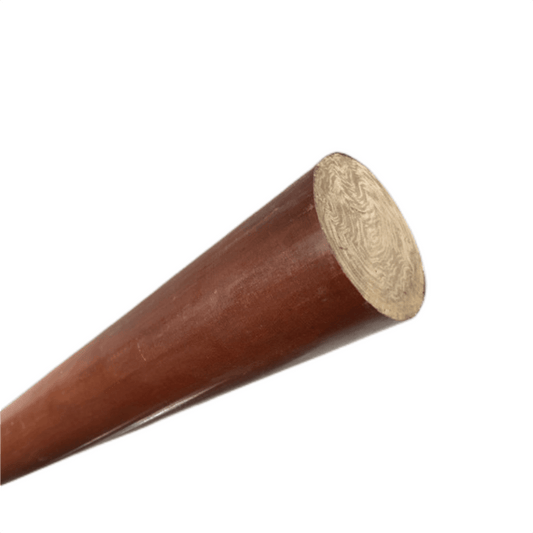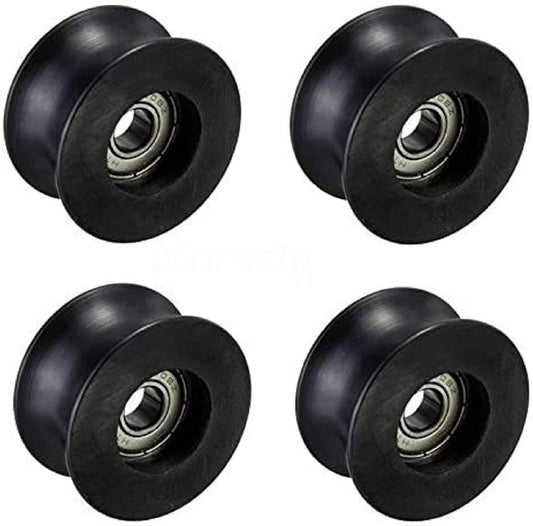Polyoxymethylene, also known as POM or acetal plastic, is a high-performance thermoplastic known for its exemplary mechanical properties, dimensional stability, and ease of fabrication. With characteristics like high strength, stiffness, and durability, POM plastic has become a widely used material across industries for precision machined parts and components.
This blog post serves as a comprehensive guide to POM plastic, discussing its properties, applications, and custom processing capabilities in detail. We’ll look at the benefits of choosing custom POM parts as well as the various manufacturing processes suitable for working with this exceptional plastic material.

What is POM Plastic?
POM or polyoxymethylene plastic is a subset of thermoplastic materials in the acetal resin family. The term “acetal” refers to the polymer’s chemical structure, while “polyoxymethylene” specifies that the polymer consists of repeating formaldehyde units.
POM plastics are also referred to as polyacetal, polyformaldehyde, and polyoxymethylene copolymer. Some common trademarked brands of POM plastic include Delrin, Celcon, Ramtal, and Hostaform.
Technical Definition
The ASTM D1600 standard defines POM or polyoxymethylene as:
"A crystalline thermoplastic polymer resulting from the polymerization of formaldehyde, having a high crystallinity, molding and extrusion properties, high mechanical strength, dimensional stability, and wear and fatigue resistance."
In simpler terms, POM plastic is produced by the polymerization and chemical linking of thousands of formaldehyde molecules into long chained molecules known as polymers. The highly organized structure and tight molecular bonding patterns result in a plastic with exceptional performance properties.
Key Characteristics and Properties
Here are some of the notable characteristics that make POM a go-to choice for precision plastic parts:
- High strength and rigidity - POM has a tensile strength of 68-72 MPa, similar to aluminum. It has high flexural strength and stiffness.
- Excellent dimensional stability - POM parts resist creep and deformation under load, maintaining precise dimensions.
- Low coefficient of friction - POM plastics have an inherently slick surface, ideal for moving mechanical parts.
- High impact and fatique resistance - POM stands up well to repeated cycles and sudden impacts.
- Chemical resistance - POM offers good resistance to oils, greases, alcohols, and alkalis.
- Food contact approval - POM meets FDA standards for food processing equipment and medical devices.
- Good electrical insulation properties
- Low moisture absorption compared to other plastics

The well-balanced property profile makes POM the material of choice for small, tight-tolerance parts subject to dynamic loads and repeated stresses. It can replace metals in many applications at a lower cost.
POM Plastic Applications
With characteristics like high strength, dimensional stability, low friction, and fatigue resistance, it’s no surprise that POM plastic has found widespread use across industries. Some of the leading applications include:
Automotive Industry
In automotive applications, POM is widely used to make small precision engine and powertrain components like gears, pulleys, fuel system parts, sprockets, rollers, and more.
The material is able to withstand the high temperatures and pressures inside engines and transmissions while maintaining dimensional accuracy. POM gears and other moving parts also minimize noise and vibration compared to metal components.

Consumer Appliances and Household Items
POM plastic is commonly found in consumer appliances like coffee makers, food processors, mixers, refrigerators, washing machines, tumble dryers, and vacuum cleaners. Typical POM parts in these appliances include impellers, fan blades, gears, rollers, washing machine drums, and various housing components.
POM is also used for common household items like zippers, fasteners, ratchets, and precision toys. It can often replace metal with the added benefit of lower production costs.

Industrial Machinery and Equipment
Industrial machinery like conveyors, robots, and assembly line equipment rely on POM plastic components like gears, rollers, sprockets, slides, and bearings. POM stands up well to continuous operation in industrial environments.
Other common POM parts used in machinery include fasteners, valves, connectors, handles, nozzles, and housings that require tight dimensional control.
Medical Devices and Laboratory Equipment
With FDA food contact approval, POM plastic has become an important material for medical devices and lab equipment. POM's ability to withstand sterilization makes it useful for medical tools, blood diagnostic devices, and surgical equipment parts.
POM's low moisture absorption prevents contamination in pipettes, valves, connectors, and other lab instrumentation. The material meets USP Class VI standards for use in devices that contact the body.

Food Processing Equipment
The food processing industry takes advantage of POM plastic's FDA compliance, strength, impact resistance, and non-stick properties. POM is often used to make blades, hooks, rollers, conveyor parts, bushings, bearings, and wear strips for food production and packaging machinery.
It can withstand the high-pressure spray washing and sterilization procedures common in food plants. POM minimizes friction and prevents food particles from sticking to components.
POM Plastic Custom Processing Capabilities
In addition to the material's inherent properties, POM plastic parts owe their precision and quality to advanced manufacturing processes. POM's balanced physical and chemical properties make it suitable for a wide range of custom plastic processing methods.
Injection Molding
Injection molding is the most common and cost-effective process for high-volume production of complex, tight-tolerance POM parts. POM plastic melts uniformly and flows very well into molds, allowing the creation of intricate shapes and details.
Injection molded POM components include gears, rollers, bushings, sprockets, cams, fasteners, nozzles, and shaft couplings used in automotive powertrains, appliances, medical devices, and industrial equipment.

CNC Machining
POM plastic is readily machinable using CNC milling and turning to create prototypes and low-volume custom parts. The material cuts cleanly without melting due to built-up heat. POM is easy to glue and assemble after machining.
Typical CNC machined POM components include gears, bushings, rollers, nuts, fittings, spacers, and hydraulic or pneumatic cylinders. The process yields extreme precision and surface finish.

3D Printing
POM and POM composites can be 3D printed using fused deposition modeling (FDM) as well as selective laser sintering (SLS). 3D printing offers design freedom for complex plastic parts unsuitable for molding or machining.
POM is one of the strongest thermoplastics 3D printable on desktop FDM printers. Printed POM prototypes and end-use parts include gears, sprockets, rollers, sliders, joints, hinges, grips, and housings.
Other Processes
Secondary finishing processes are often used on POM plastic parts to add specific properties or enhance aesthetics:
- Laser engraving for markings and designs
- Vibration and ultrasonic welding for assembly
- Surface treatments like vapor polishing or spray coatings
- Insert molding to combine POM with metal inserts
POM can also be fabricated using water jet cutting, plasma cutting, and other rapid prototyping methods.
Why Choose Custom POM Plastic Parts?
With the right manufacturing process, POM plastic parts offer significant benefits over machined metal, injection molded plastics, and 3D printed prototypes:
Consistent Quality and Precision
Custom POM parts are produced by specialized manufacturers with expertise in processing the material to strict tolerances. This results in high quality parts that match or exceed OEM specifications.
Customization
POM plastic can be injection molded, CNC machined, or 3D printed in small to medium volumes with custom sizes, shapes, and features. Custom POM parts are ideal for replacing standard catalog components.
Scalability
A design can be quickly iterated from POM 3D printed prototypes to injection molded low-volume production as quantities scale up. The same POM material is used across processes for design consistency.
Cost Savings
POM plastic parts are cheaper to produce compared to metals, especially in lower volumes. Less material waste also occurs during POM machining versus metals.
Shorter Timelines
POM processing is typically faster than tool steel or alloy machining. No hardening or heat treatment steps are required, reducing overall manufacturing time.

POM or polyoxymethylene plastic is valued across many industries for its high strength, dimensional stability, low friction, and resistance to impact and fatigue. These properties make it well-suited for the custom fabrication of small, tight-tolerance plastic components subject to dynamic loads and stresses.
Injection molding, CNC machining, 3D printing, and secondary finishing processes can all be leveraged to manufacture custom POM parts for automotive, appliance, industrial, medical, and food processing applications. POM plastic offers OEM quality and precision, design flexibility, scalability from prototyping to production, and shorter lead times compared to metals.
When you need durable, low-cost plastic components with extreme accuracy, POM is likely the ideal material choice. POM precision components can be obtained through injection molding, machining, or additive manufacturing. Partnering with an experienced manufacturer of POM custom parts ensures you get the properties, quality, and performance your application requires.
For more information on having high-performance POM plastic parts tailored to your needs, contact us today! Our engineers are ready to discuss your project and deliver custom POM solutions.







